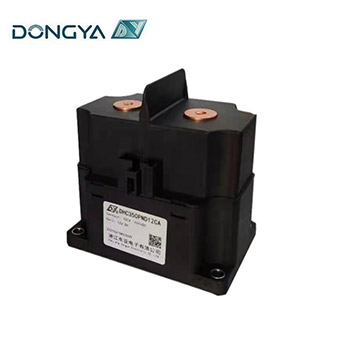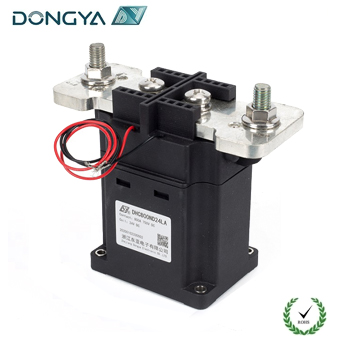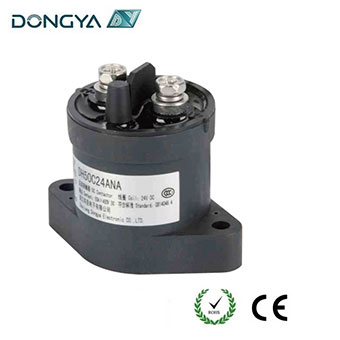DC contactors are key components in electric vehicles (EVs), ensuring safe and efficient power distribution between the battery pack, motor controller, and charging system. Selecting the right EV contactor requires evaluating voltage rating, current capacity, switching performance, and environmental durability. This guide explores the key factors to consider when selecting a DC contactor for EV applications.
Key Considerations for Selecting EV Contactors
1. Rated Voltage (VDC)
In next-generation platforms, EV battery systems are typically operating at voltages of 400V, 800V, and even higher. DC contactors must be able to withstand the highest voltages of the system, including transient spikes.
Low-voltage EVs (12V-48V): For auxiliary systems.
High-voltage EVs (400V-1000V+): For main battery disconnect switches and fast charging circuits.
2. Current Capacity (Continuous and Peak)
Continuous Current: Must match the normal operating current of the EV (e.g., 200A-500A for a passenger EV).
Peak/Surge Current: Should be able to withstand short-duration surges (e.g., when the motor is accelerating or charging quickly).
3. DC Contactor Types
Single-Pole Contactor: Basic on/off switching (often used for auxiliary circuits).
Double-Throw Contactor: Allows switching between two circuits (good for redundancy or charge/discharge paths).
Latching (Magnetic Holding) Contactor: Energy-saving, maintains state without continuous power supply.
4. Arc Extinguishing Capability
DC arcs are more difficult to extinguish than AC arcs. High-voltage EV contactors require:
Magnetic blowout or gas-filled chamber to extinguish the arc.
Ceramic or vacuum interrupters are used for UHV applications.
5. Mechanical and Electrical Life
Mechanical Life: Typically exceeds 100,000 operations.
Electrical life: Varies with load; high current switching shortens life.
6. Environmental and safety compliance
Temperature range: Electric vehicles operate in extreme conditions (-40°C to +125°C).
Vibration/shock resistance: Must withstand road vibrations (ISO 16750-3).
Safety certifications: UL, IEC, and automotive standards (e.g., ISO 8820).
7. Size and weight
Electric vehicles prioritize compact and lightweight designs to save space and improve efficiency.
8. Smart features (optional)
Integrated current sensors for real-time monitoring.
CAN bus communication for diagnostics and predictive maintenance.
Common Applications for EV DC Contactors
| Applications | Key Requirements |
| Main Battery Disconnect | High Voltage (800V+), High Current (500A+), Ultra-Fast Switching |
| Motor Controller | High Frequency Switching, Low Contact Resistance |
| DC Fast Charging | High Inrush Current Handling, Arc Suppression |
| Auxiliary Systems | 12V-48V, Compact Design, Long Life |
Conclusion
Choosing the right EV DC Contactor requires balancing voltage, current, switching performance, and durability. With the rise of 800V EV architectures and ultra-fast charging, advanced electric vehicle contactors with higher efficiency and smarter features are becoming critical. By evaluating these key factors, engineers can ensure reliable and safe power management for the next generation of EVs.





